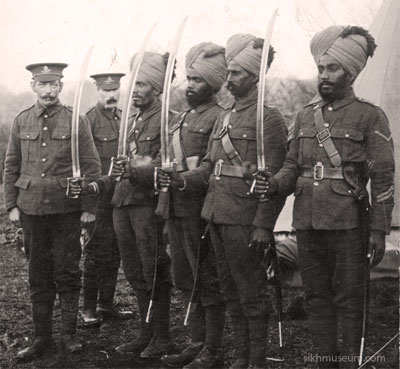Motorcycling, as a sport and mode of transport, has a deep cultural significance for many, serving as an expression of freedom and individuality. In recent years, the Sikh community has made a remarkable mark on this culture, particularly by embracing motorcycling while keeping their turbans intact. The sight of Sikh motorcycle riders wearing turbans has sparked a mix of admiration, curiosity, and support, symbolizing a blend of faith, tradition, and passion for riding. Yet, it also raises important conversations about cultural identity, safety, and inclusivity, especially in the context of laws and regulations regarding headgear and road safety.
The Turban in Sikhism and Its Significance
The turban, or “Dastaar,” is an essential part of Sikh identity. For Sikhs, wearing a turban is not just a piece of cloth; it is a symbol of spirituality, equality, and honor. Sikh men are encouraged to wear the turban as an expression of their faith and commitment to the teachings of Guru Nanak, the founder of Sikhism. The turban is also worn to cover the hair, which is considered sacred in Sikhism.
In many countries, including Canada, the turban is not only a spiritual symbol but also a matter of legal and social recognition. Sikhs around the world, including in Canada, take pride in wearing their turbans in all walks of life, including in professional settings and while serving in the armed forces or police.
Sikhs in the Armed Forces and Police
Historically, Sikhs have had a strong presence in various armed forces worldwide, where the turban has been worn as part of military uniforms. In Canada, Sikh soldiers have served proudly, wearing their turbans while following their duties in peacekeeping, combat, and national defense. In fact, the Canadian Forces have recognized the significance of the turban for Sikhs and have made accommodations to ensure that Sikh soldiers can serve while maintaining their religious identity.
The same goes for the police force. Sikh officers in Canada, from Ontario to British Columbia, are allowed to wear turbans as part of their uniforms, showcasing the inclusive nature of Canada’s public institutions. These policies affirm that cultural and religious expression should be embraced and respected in public service, making it clear that Sikhs can serve their nation and communities with pride, while adhering to the traditions of their faith.
Motorcycling with a Turban: Challenges and Considerations
For Sikh motorcyclists, wearing a turban while riding a motorcycle can be a unique challenge. Helmets are legally required for motorcyclists in many regions, but these regulations often present a dilemma for Sikh riders, who view the turban as an inseparable part of their identity. Fortunately, in Canada, several provinces have recognized this issue and made provisions for Sikhs to ride without helmets as long as they wear their turban. This policy helps to protect the rights of Sikh motorcyclists to practice their religion while ensuring road safety.
For example, in Ontario, Sikh motorcyclists are exempt from wearing helmets as long as they are wearing a turban. The same exemption is granted in provinces like British Columbia and Alberta, where accommodations have been made to allow Sikhs to keep their turbans while adhering to road safety laws. These regulations demonstrate the importance of balancing cultural sensitivity with safety standards.
However, safety is a critical concern, and it’s essential that Sikh motorcycle riders ensure that their turbans are securely tied and do not interfere with their ability to ride safely. The turban should not obstruct their field of vision, nor should it impair their control over the motorcycle. Some Sikh riders even choose to wear additional headgear under their turban, such as skull caps, to help keep the turban in place during high-speed rides.
The Safety Debate: Motorcycle Riders vs. Non-Riders
Motorcycle safety is a topic of considerable debate, especially when it comes to wearing helmets. In Canada, motorcycle-related fatalities are a significant concern, and while helmet laws have been shown to reduce the severity of injuries, the issue of helmet exemptions for Sikhs is a point of discussion. Statistics show that motorcycle riders are more likely to be involved in accidents compared to non-motorcyclists. According to the Traffic Injury Research Foundation, motorcyclists are 20 times more likely to be killed or seriously injured than other road users in Canada.
Despite the risks, Sikhs who ride motorcycles with turbans argue that safety should not be compromised. They often point out that proper training, experience, and vigilance on the road are critical in reducing the chances of accidents. Sikhs have long been advocates for road safety, and many actively participate in safety awareness programs and motorcycle training courses. This allows them to continue riding with their turbans while adhering to the necessary safety guidelines, reducing the risk of accidents and fatalities.
Laws and Regulations Across Canada
While the laws surrounding helmet exemptions for Sikh motorcycle riders vary slightly across different provinces, the general trend has been one of inclusivity and recognition of the right to wear a turban. Here’s a brief overview of the helmet laws in some provinces:
- Ontario: Sikh riders are exempt from wearing helmets, provided they wear a turban instead. The exemption was granted after legal challenges in the 1980s, which ultimately led to a court ruling that upheld the right of Sikhs to ride without helmets.
- British Columbia: Similar to Ontario, Sikh motorcyclists are allowed to ride without a helmet if they wear a turban. The province acknowledges the cultural and religious significance of the turban and has made provisions for this.
- Alberta: In Alberta, Sikh riders are also exempt from wearing helmets as long as they wear a turban. The province recognizes that religious accommodation is important, and the laws are reflective of that.
- Quebec: The law in Quebec also allows Sikh riders to ride without helmets, as long as they are wearing a turban.
In all provinces, however, it’s essential for Sikh riders to ensure that their turban is properly secured to avoid safety hazards while riding.
Conclusion: A Culture of Safety and Inclusion
As more Sikhs embrace motorcycling, wearing turbans while riding, Canada’s progressive and inclusive laws serve as a model of how to balance respect for cultural traditions with ensuring safety on the roads. The continued recognition of Sikh riders in the armed forces, police, and on motorcycles demonstrates a broader societal acceptance of cultural diversity. By creating laws that respect religious expression while prioritizing safety, Canada stands as an example of how to promote inclusivity, support cultural identity, and encourage road safety for all.
As we move forward, it’s crucial that communities continue to support Sikh motorcycle riders, ensuring that both their safety and their faith are honored. Riding with a turban is not just about embracing freedom on two wheels—it’s about embracing one’s identity and living with pride.




